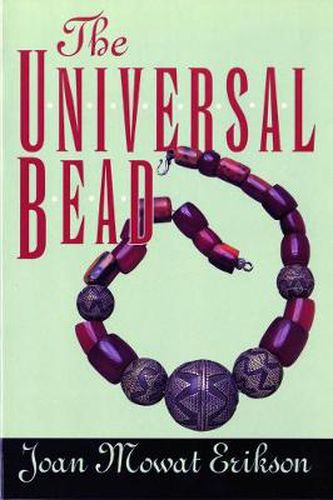Readings Newsletter
Become a Readings Member to make your shopping experience even easier.
Sign in or sign up for free!
You’re not far away from qualifying for FREE standard shipping within Australia
You’ve qualified for FREE standard shipping within Australia
The cart is loading…






Responding to a new surge of interest in beads, this reissue edition with all new color plates examines the role of these intriguing objects in human affairs. The first chapter traces the travels of beads by mule-pack, caravan, and cargo. Egypt, India, and Mesopotamia were connected by trade routes along which beads were carried. Amber from the Baltic Sea abounded around the pre-Roman Mediterranean; gifts of beads were used by Columbus and Cortez to achieve their first footing on the American continent.Joan Mowat Erikson gives an account of the use of beads for decoration, as insignia of rank and status, as bearers of magic power, and as currency. She describes the materials out of which beads have been made and the skill used in their production, from the simple gathering of natural beads (berries, nutshells) to the cutting and polishing of colorful stones (turquoise, jade, amber) and the mass production of clay, faience, and glass beads.In a chapter on beads and magic, Erikson discusses beliefs in their power to protect the wearer against the evil eye, increase prowess as hunter and warrior, cure diseases, and ensure luck and favor with the gods, as well as to enhance the potency of man and the fertility of women, livestock, and lands. She concludes with some thoughts on the meaning of beads and their universal appeal.
$9.00 standard shipping within Australia
FREE standard shipping within Australia for orders over $100.00
Express & International shipping calculated at checkout
Responding to a new surge of interest in beads, this reissue edition with all new color plates examines the role of these intriguing objects in human affairs. The first chapter traces the travels of beads by mule-pack, caravan, and cargo. Egypt, India, and Mesopotamia were connected by trade routes along which beads were carried. Amber from the Baltic Sea abounded around the pre-Roman Mediterranean; gifts of beads were used by Columbus and Cortez to achieve their first footing on the American continent.Joan Mowat Erikson gives an account of the use of beads for decoration, as insignia of rank and status, as bearers of magic power, and as currency. She describes the materials out of which beads have been made and the skill used in their production, from the simple gathering of natural beads (berries, nutshells) to the cutting and polishing of colorful stones (turquoise, jade, amber) and the mass production of clay, faience, and glass beads.In a chapter on beads and magic, Erikson discusses beliefs in their power to protect the wearer against the evil eye, increase prowess as hunter and warrior, cure diseases, and ensure luck and favor with the gods, as well as to enhance the potency of man and the fertility of women, livestock, and lands. She concludes with some thoughts on the meaning of beads and their universal appeal.